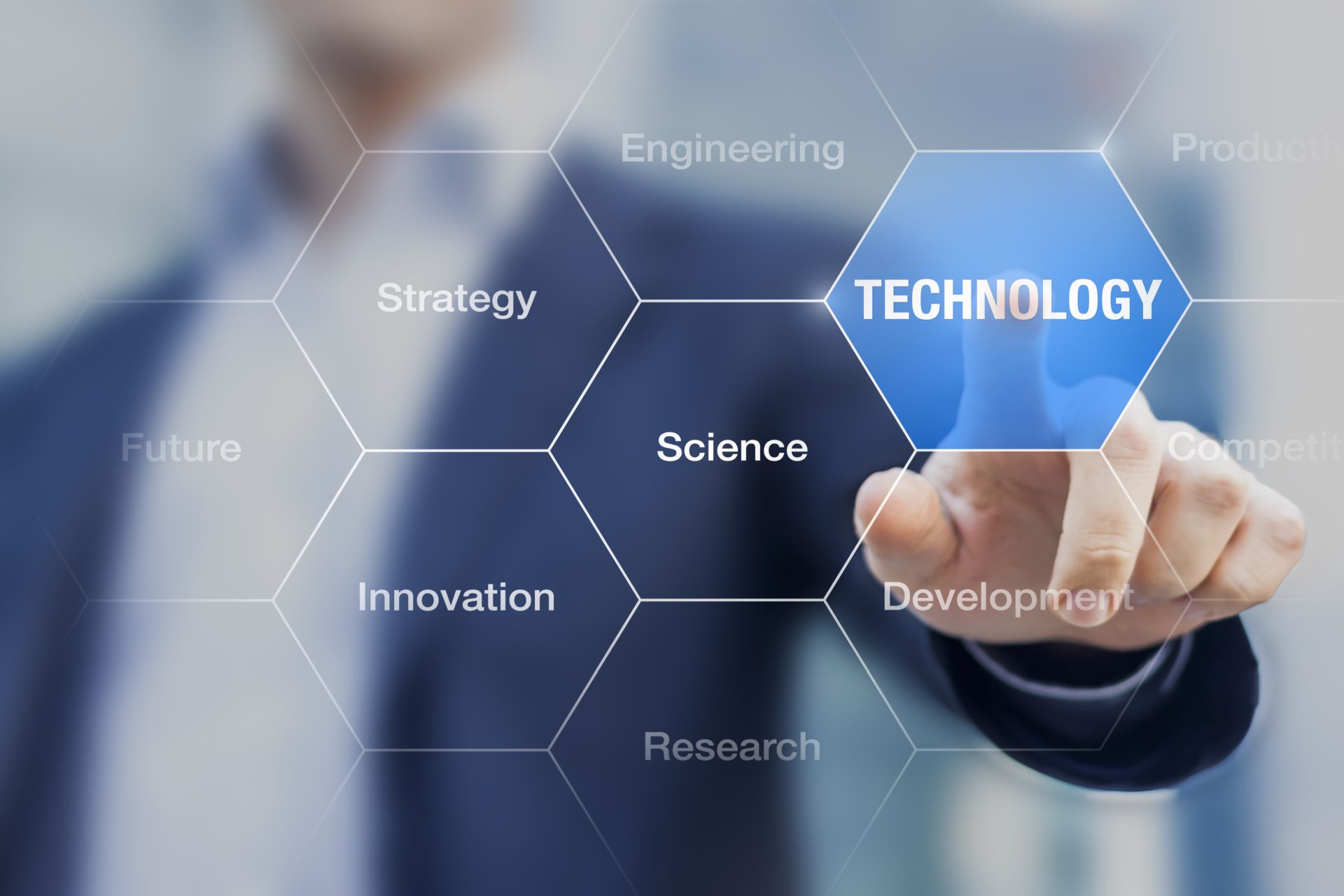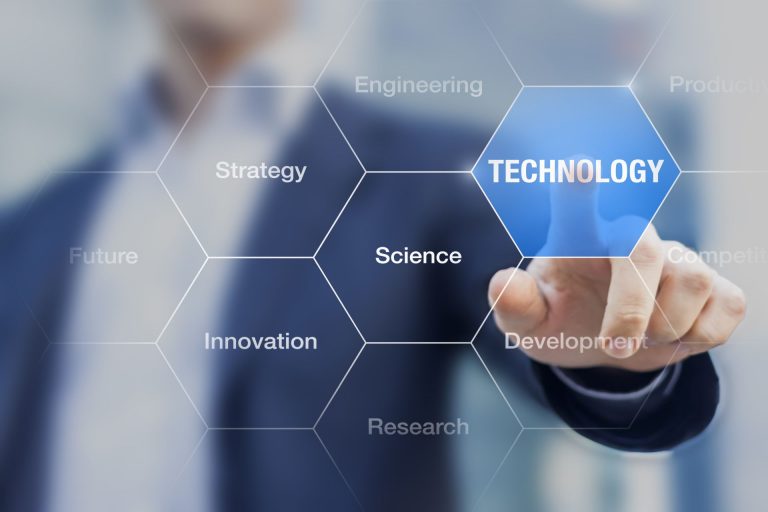8 Emerging Technologies Changing The Business Landscape
Look around, there’s innovation everywhere! However, while some emerging technologies become widely adopted in everyday life, others become highly specialized or fail to attract enough users.
Whether it’s a general-purpose system or a niche technology, hardware and software tools are helping businesses tackle projects large and small.
A few emerging technologies in this list are already used by companies around the world.
However, all of them will impact various sectors of the economy to meet increasing consumer demands.
These emerging technologies will also speed up business processes and may even add “virtual team members” to companies.
1. Artificial intelligence (AI)
When it comes to emerging technologies, artificial intelligence tops the list. AI is currently available in some forms, but there are so many more intuitive developments on the way.
Looking ahead, AI will transform customer experiences, help launch digital products and services, and optimize supply chains.
Unified AI efforts will improve customer engagement, operations management, new product offerings, and employee empowerment.
As businesses integrate AI into more machines and systems, there will be a massive increase in available data.
This data will help companies make better predictions across the board, guiding processes ranging from internal financial decisions to supply chain management.
The long-term goal of AI is 100 percent autonomy, but for the time being, there’s still a need for human operators.
As companies begin integrating AI solutions into their processes, there will be a demand for individuals specialized in AI development or maintenance.
3DSS.Tech: Using AI to Develop Facial Recognition Technology
When Apple launched its signature Face ID unlocking feature on the iPhone X, the world of digital security changed forever. And although facial recognition has been around since quite some time, it is a technology of the future and one that is here to stay.
2. Internet of Things (IoT)
Next on the list of promising emerging technologies is IoT.
The Internet of Things’ ability to connect devices, services, and systems can lead to improved business decision making, which in turn aids in minimizing operational costs and increasing asset utilization.
Numerous companies already use IoT solutions and its connected devices for supply chain tracking and product lifecycle management.
Looking to the future, IoT may transform current practices of generating data, as well as the process of product delivery and tracking.
IoT-enabled product tracking could send out real-time updates, impacting overall business decisions.
3. 5G connectivity
The fifth generation of wireless network connectivity is set to open up new opportunities for businesses, particularly those in the technology sector.
5G will help to expand the applications of IoT by allowing more devices to connect on a single network.
This newest iteration of the wireless network will provide faster connectivity, decreasing download times, lowering the lag between sending instructions to devices the device’s execution of those instructions, and increased reliability with fewer lost connections.
Paired with other emerging technologies, 5G will expand consumer offerings while assisting businesses with daily tasks.
4. Database management
Businesses are changing how they manage their databases. Self-maintained cloud databases can eliminate the need for individuals to tackle mundane maintenance tasks.
Instead, cloud databases can use machine learning to handle backups, updates, security, and other day-to-day operations.
Oracle now offers an autonomous database to its clients. This database is self-driving, self-securing, and self-repairing, which simplifies day-to-day tasks.
As clients begin to use more autonomous database management tools, human error will decline, and individuals will have more time to focus on pertinent initiatives.
Blockchain Technology is All Set to Revolutionize the Financial Sector
Blockchain technology has been in the news as the super-tech powering bitcoin, the popular cryptocurrency that is revolutionizing the way we conduct transactions, and more recently, supply chain management. Simply put, blockchain is a vastly distributed ledger that records anything of value. This includes deeds, equities, contracts, rental agreements, money, titles and realistically any kind of asset.
5. Blockchain
Blockchain is one of the most talked about emerging technologies.
This is probably because it gives businesses an accurate record of products in real time, regardless of a given product’s location.
Blockchain also helps companies with transaction processing, which is especially useful for international organizations.
In the future, some businesses may operate separate blockchains in one system, producing a massive system for tracking and transferring data.
Numerous CEO’s have expressed interest in using blockchain to speed up or otherwise improve business segments such as finance or the supply chain.
Companies that utilize blockchain solutions can increase their transparency and ability to account for products throughout their supply chain.
6. Autonomous robotics
This technology joins robotic operations and AI. Robots with proper training can work in existing business landscapes and tackle tasks at any time of day.
The U.S. Postal Service has been running pilot programs of this technology to collect information about incompletely-labeled packages.
Their devices could locate necessary information four times faster than human workers.
When companies can minimize errors or locate missing data faster, they can also reduce wasted time and avoid unnecessary expenses.
As companies implement autonomous robots, a support staff will be necessary to keep the machines up and running.
Businesses will also need to protect their robots from hackers and data loss.
Overall, these machines can speed up processes and reducing the risk of misplaced products.
7. 3D printing
3D printing is still relatively uncommon. Its implementation has been restrained by a variety of factors, ranging from high equipment costs to the absence of common technical standards.
However, 3D printing has the chance to assist future supply chains.
3D printing holds promise for a number of industries, from automotive manufacturers to medical prosthetics.
The ability to customize things with 3D printing will help provide truly personalized products to consumers.
3D printing can also use a variety of materials, including plastic, metal, and even glass, to meet different needs.
As businesses adopt 3D printers for more processes, they will need highly trained individuals to service the machines.
Businesses might also consider hiring or training in-house personnel to test and create products that can be 3D printed.
AI might possibly manage 3D printers in the future, but individuals will still be needed for maintenance and product creation.
Nimest.tech: Powering the World of Tourism with Augmented Reality
How does Nimest use Augmented Reality and AI to create an engaging travel app? Give us an overview. First, it is important to mention that we are not only building an app but a platform, since our intention is to make it available not only for mobile but also for wearables such as Magic Leap and HoloLens.
8. Augmented reality (AR) and virtual reality (VR)
Emerging technologies are incomplete without mentioning AR and VR. Mixed reality seamlessly merges the digital world with the real world.
Augmented reality overlays virtual environments in the real world, while virtual reality immerses users in a computer-generated world.
Both technologies will change how people interact with their environments.
The ways in which businesses make use of these technologies will impact employee training, customer service, and other business practices.
Some businesses already use AR and VR in their stores or to create immersive customer experiences.
AR will allow customers to view a product on them, while VR will show customers products that might not be available in stores.
Both options can enhance the customer experience.
Mixed reality can also aid companies in training their employees.
Virtual reality allows employees to experience potentially dangerous situations in safe environments.
For example, nurses can use augmented reality to map a patient’s veins, reducing the likelihood of a failed needle stick for blood work.
As businesses continue to add AR and VR experiences for their customers or incorporate this technology into employee training, they may need to employ individuals who can oversee these programs.
Companies will need people to manage software updates and to test new ways of using technology.
Wrapping it up
Technology tools and processes are changing rapidly for businesses and individuals. New and emerging technologies offer solutions that can assist people in everyday procedures.
As organizations explore ways of improving or augmenting their current practices with technology, additional people may be needed to join the team.
In the end, these technologies should offer companies different — and more effective — ways to tackle everyday tasks.






